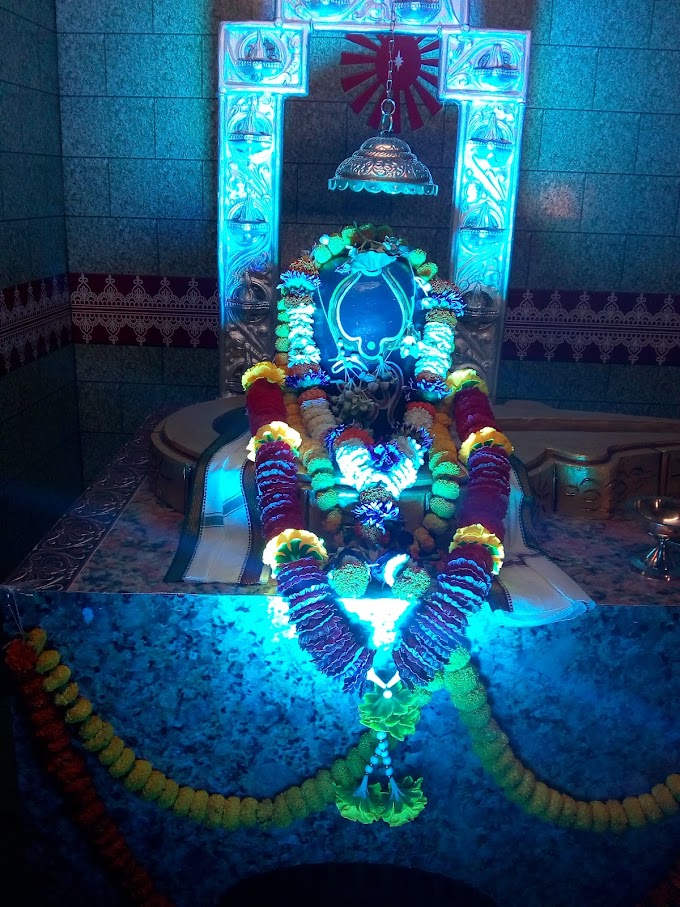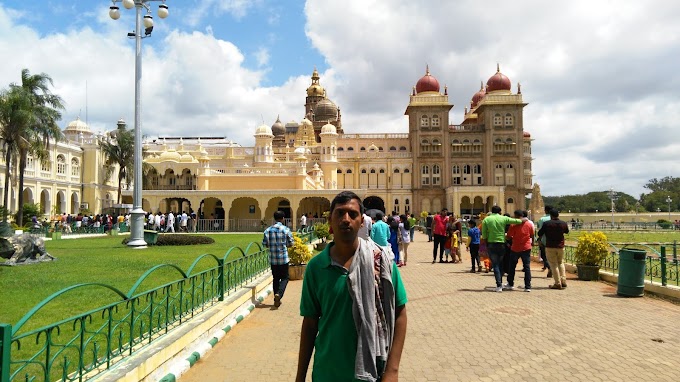EASTERN CULTURE AND CONTRIBUTION TO THE WORLD DURING ANCIENT ERA: CONCEPT OF CULTURE
The ancient
civilization is called Sumerian civilization and thereafter Mesopatamia
Civilization came to existence which was
older then Indus Valely Civilization.
Actually in the eastern part of the world had civilization in comparison to
mesopatamia during the same era. Only one ancient civilization was in the part
of eastern which is called as Indus Valley Civilization. Subsequently the
culture of Indus Valley has given the new light to the human being in all
aspects.
Indian history and
culture begins with a mysterious culture along the Indus Civilization and in
farming communities in the southern lands of India. The history of India is
punctuated by constant integration of migrating people with the diverse
cultures that surround India. Available evidence suggests that the use of iron,
copper and other metals was widely prevalent in the Indian sub-continent at a
fairly early period, which is indicative of the progress that this part of the
world had made. By the end of the fourth millennium BC, India had emerged as a
region of highly developed civilization.
THE INDUS VALLEY
CIVILIZATION
Indian history begins with the birth of
Indus Valley Civilization, otherwise known in the name of Harappan Civilization, in the western part of
South Asia (specially at present it covers the area of Pakistan and Western
India) during 2500 BC. Indus Valley
Civilization was the the largest urban civilizations among the four ancient civilization i.e. Egypt,
Mesopotamia, India and Sumerian. When the Archaeological Department of India
carried out excavations in the Indus valley during 1920s, wherein the two old
cities, i.e. Mohenjodaro and Harappa, were found. During the excavation of the
site, the researchers has found the ruins of buildings, household articles,
weapons of war, gold and silver ornaments, seals, toys, pottery wares, etc.
which are basically aged about four to five thousand years.
In case of food
culture, the civilized Harappans knew the art of growing cereals, and wheat and
barley constituted their staple food. They consumed vegetables and fruits and
ate mutton, pork and eggs, meats. Evidences also show that they wore cotton as
well as woollen garments. By 1500 BC, the Harappan culture came to an end.
Among various causes ascribed to the decay of Indus Valley Civilization are the
recurrent floods and other natural causes like earthquake, etc.
The ancient India and China was the
center point during the ancient civilization and all new inventory was started
from the eastern part of world
VEDIC CIVILIZATION
After demolition of
the Indus Civilization, the another civilization was taken birth in name of
Vedic Civilization. The historian says that during this period two epics were
written i.e. Ramayan and Mahabharata. During this period no religion was
existed except “SANATANA DHARMA”. The name of this Vedic Civilization is
derived from the word “Vedas”. According to Hindu Religion, There are four Vedas i.e. Rigveda, Yajurveda, Samadeda,
Atharvaveda. The Vedic Civilization grown along on
the bank of the river Saraswati, in a region that now consists of the modern
Indian states of Haryana and Punjab. As per the Hindu religion, Vedic is not only spiritual but also in it
have many day to day relationship, medical treatments and about social life of
the hindus. This era have more importance over the human life during subsequent
period. Mahabharat and Ramayan, these two epics teaches many things and with
race, sex, religion, color and countries all are influenced by it and it have
grate popularity in whole world.
BUDDHISM (623 BC)
One religion has
taken birth during this era from the Hinduism and have separate named is called
Buddhism. The father of Lord Buddha was Śuddhodana, a hindu King. Siddhartha
Gautama (earlier name of Lord Buddha),was born into a wealthy family as a
prince during the 5th Century and subsequent period he is the
founder of Buddhism who later
became known as “the Buddha”.
The Buddha was
a philosopher, meditator, spiritual teacher who always wanted to teach about
the MOKSHA and MAYA. He is not a religious leader and he had no intension to
create a new religion but after Moksha (after death), the follower of Lord
Buddha expanded his ideology all over the world during that era and that
ideology become a new religion in his name “Buddhism”. According to Hinduism,
the lord Buddha is one avatar among of the 10 avatars
of lord Vishnu. Therefore, many persons
called him as religious leader who lived in Ancient India. He is honored as the
founder of the world religion of Buddhism, and worshipped by Buddhist schools.
The
western culture dominated the eastern culture and the western people made joke
to the eastern culture and religion during 15th century to 19th
century but now they realize that they were wrong and the concept of culture
also has adopted them because the such culture is have a great value till
date.
JAINISM (527 BC)
After
the Buddhism, another religion taken birth during the ancient era and named as Jainism. According to the Jain philosophy, Lord
Mahavira was the twenty-fourth and last Jain Tirthankara. He was a great philosopher,
meditator, spiritual teacher who always wanted to teach about the MOKSHA and
MAYA and enlightened soul. A Tirthankara is an enlightened soul and born as a
human being to perfection through intense meditation. After Moksha (after
death), the follower of Lord Mahaveera Jain, expanded his ideology all over the
world during that era and that ideology become a new religion in his name
“Jainism”.
The
parents of lord Jain is Kingh Siddhartha (father) and Queen Trishala (Morther).
The parents of Lord Mahaveera was a Hindu King. born as Vardhamana Mahavir, he
later came to be known as Bhagvan Mahaveer. After achieving Kevala Jnana, he
travelled throughout the Indian subcontinent to teach Jain philosophy for the
next 30 years. Lord Mahavira considered men and women to be spiritual equals
and that they both may renounce the world in search of Moksha. Lord Mahavira
encouraged participation of people from all social standings, rich and poor,
men and women, touchable and untouchable.
Initially
the eleven Brahmins chose to convert to Jainism and became the chief disciples
of Lord Mahaveera. These eleven Brahmins namely, Achalbhadra, Agnibhuti,
Akampita, Indrabhuti, Mandikata, Mauryaputra, Metarya, Prabhasa, Sudharma,
Vayubhuti, and Vyakta. Lord Mahavira teaches
to his disciples about the Tripadi Knowledge (Three Pronouncements) such as
Upaneiva (Emergence), Vigameiva (Distruction) and Dhuveiva (Permanence).
ANCIENT
BOOKS: Vedas, Mahabharat, Ramayan, Arthashastra
(Chanakya), Upanishads, Gita Govinda(jayadeva), Shakuntala, Harshacharita,
Meghaduta, Charak Samhita, Kadambari, Manusmtiti, Mahabhasya, Gaha Satta,
Vikramorva (Kalidasa), Malavikagni (Kalidasha), Sushruta Samhita, Lilavati,
Aryabhatiya
“MANASARA” is one of the ‘SILPASASTRA’, which is related to general science on the art of city planning, architecture, art and sculpture. Collectively these books constitute the Sanskrit literature on these fields
The
world what is now all idea came from the eastern part of world and by use those
technique, the other new inventory has come.
The ancient western culture had no ideology and to gain the ideology,
the people of western part came to Indian university. The education system was
such high level that all field including space, medical science, technology
knew by the ancient Indian.
ANCIENT
CHINA
During the demolition of Indus Valley civilization,
another civilization taken birth at the North- East side of Indus river which
is known as ancient China Civilization. The ancient China were considered
Confucianism, Taoism, and Buddhism as “three pillars” of ancient Chinese society. These As philosophies and religions, they not only
influenced spirituality as well as social structure forever but also it helps
for the new invention of government, science, the arts etc.
The
Chinese civilization has given many new inventory things to whole world and the
contribution of China is unforgettable. The four major contribution during the ancient time were Paper, Printing,
Gunpowder and Compass. Now days these are very important. The concept of pot
was also contribution by the Chinese. And subsequent stage those things had
much more importance then present days. Without those things the Human
Civilization could not forward and could not reached like as present day.
The
concept of candle light invented by the Chinese and which helped subsequent
period to grow up the Human civilization.
Ancient
Chinese urban planning Ancient Chinese urban planning encompasses the diverse
set of cultural beliefs, social and economic structures, and technological
capacities that historically influenced urban design in the early period
of Chinese civilization.
CONCLUSION
The
eastern part of world was the brilliant in all fields and the culture also.
Every things knew and used for their development. Without eastern culture, the
western culture have no value. The modern swimming pool (Indus Valley) to
Nalanda University (5th Century) have the great contribution to the
world. From the above ancient books, the ancient culture come to the knowledge
of world. It is difficult to say that they ancient culture is either bad or
under developed. In field of Arts, such a great temple was made which is
difficult to re-build in this modern period.
First
human being came from Africa, the first civilization started at western world
but well and developed civilization started from eastern part who gave the
light of knowledge to whole world till date. The contribution of the eastern
part (un-divided India, China) to the world is unforgettable.










